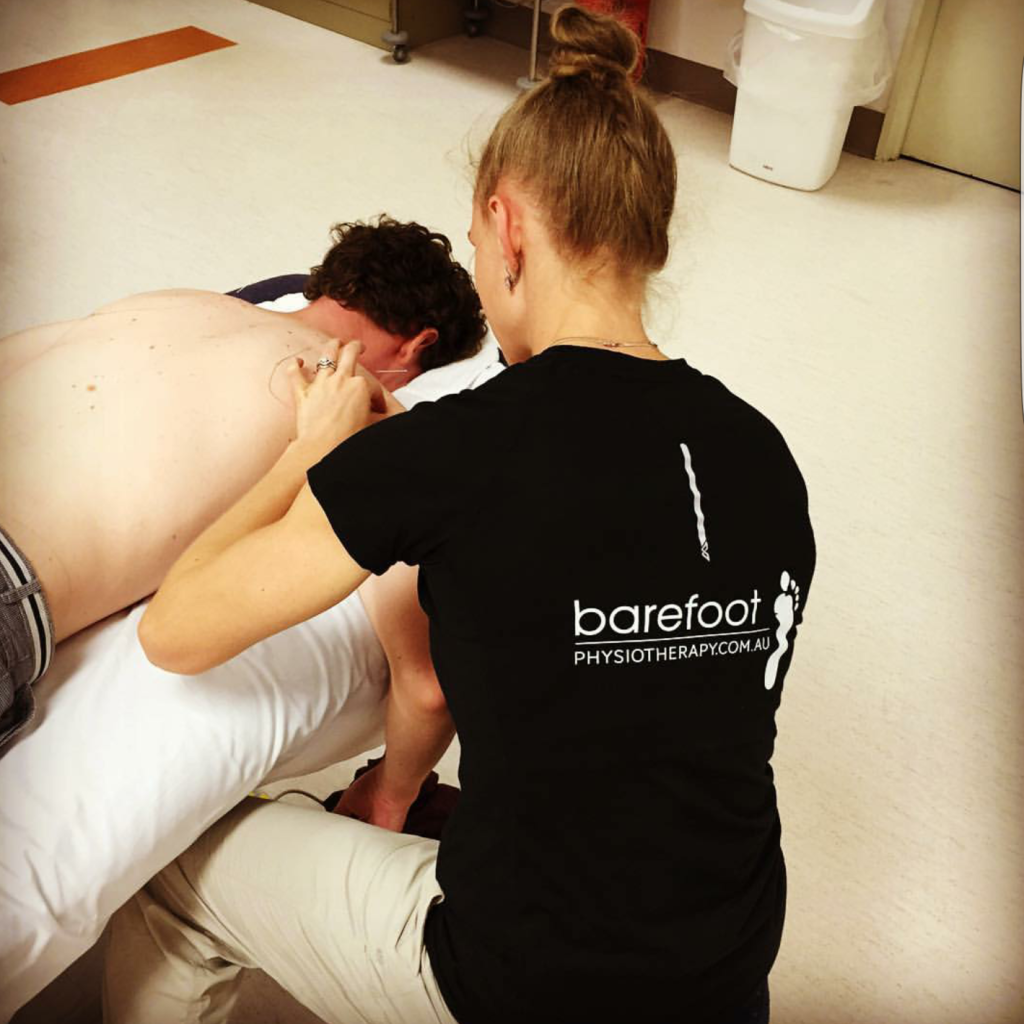Why Choose Dry Needling
Your physiotherapist may suggest dry needling as a technique to help in your treatment. There are several benefits that may make it a good choice of treatment for you.
Simply inserting the needle has positive effects:
- It stimulates local endorphin release and increased blood flow to the area. These local effects can cause pain relief for up to 3 days.
- It can also stimulate an inflammatory response to kick start a healing process that has gone stagnant
- It can activate another type of pain control – the pain gating mechanism that continues relief up to 8 hrs following treatment
- It can have immune effects; causing an increase in white blood cells and other cells that help clear debris in an injured/dysfunctional area
Needling also works on spots called trigger points. These areas are hypersensitive and feel like a knot or band in your muscle. A trigger point affects muscle range, power, recruitment and may produce local or referred pain. Muscles that contain trigger points often tire quickly and take longer to recover and relax. They also have a loss of coordination with other muscles or movements. How it helps:
- Inhibiting sporadic muscle activity of a trigger point even several hours following treatment
- Stimulating normal calcium re-uptake required for appropriate muscle contraction
- Stimulating healing as well as collagen and protein formation
- Producing immediate changes to muscle length and motor control
What it should feel like: dull, achy, dragging, bruised, grabby, warm.
What it shouldn’t feel like: stingy, sharp, pins and needles.
Needling is done with a sterile, disposable needle. Needles will be inserted into the skin and may be manually stimulated to induce a better response. Following treatment, it is normal to feel a bit achy and/or tired for 24-48 hours. Some other side effects that are not as common exist, so it is best to discuss this with your physiotherapist.
Is it Acupuncture?
Dry needling is often used interchangeably with the word acupuncture. Although both techniques use the same fine needles there are differences in duration and rational for treatment;
- Acupuncture is based on eastern medicine of treating meridians or energy lines. Needles in acupuncture remain in situ for longer periods of time
- Needling targets trigger points in muscles and stay in for shorter periods or several minutes
If it sounds like Dry Needling is a good treatment option for you, talk to your Physiotherapist!






